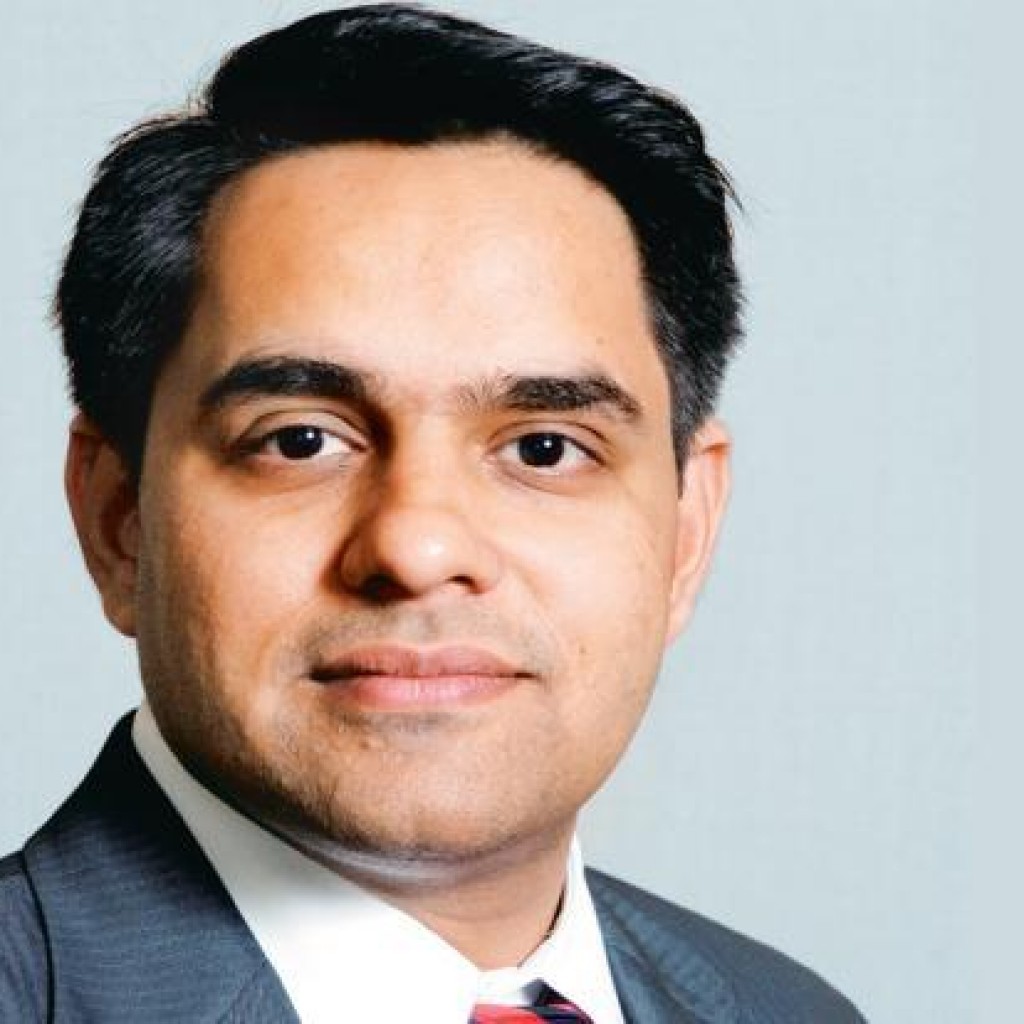Singapore: The International Monetary Fund (IMF) recently warned about the risk of investing in emerging market (EM) corporate bonds, saying slower growth is putting pressure on the issuers’ capacity to service their debt. Indian companies that have sold debt to foreign investors are relatively stronger than those from other regions, said Ravindra Deshpande , senior investment analyst at Silverdale Capital Pte. Ltd . But the debt levels at some of India’s infrastructure firms are worrying, and a possible solution could involve the next government supporting these companies through a fund infusion in the form of preferential equity, he said in an interview.
Edited excerpts:
IMF recently warned of increasing risks from bonds issued by indebted companies in fast-growing economies—what according to you are the troubled spots? Where do Indian companies stand on this front?
The US dollar debt raised by Indian corporates is largely by public sector banks and large corporates like the oil and gas majors or the Bhartis of the world. Thus, issuances from India are by relatively stronger companies than those from other regions.
We are also comfortable with the notes issued by Turkish banks which are much better capitalized than their peers in other countries, including India. We also like the top six Chinese banks which are too big to fall and have reasonably robust credit profile.
We see spots of worries in the Indian infrastructure sector, where Indian companies have raised US dollar debt using credit support of PSU (public sector undertaking) banks. Ex-India, caution needs to be exercised in the case of issuances by some of the Chinese property players. We are particularly worried about high-yield paper—we believe the risk premium offered does not cover the embedded default risk. We would like to make special mention of Russian bonds, which are absolutely and grossly mis-sold, as being issued by large conglomerates or corporates, when legally they are issued by orphan SPVs (special purpose vehicles). In case of default, the investor would have practically no recourse.
You talked about the debt levels in Indian infrastructure companies—will the new government be forced to write off some of this debt?
Some of these companies had bid aggressively for projects that may not even see the light of day, but the debts are there on the books. Steps will have to be taken, but whether the new government will take it or not is difficult to say. What we have seen in other countries is that rather than writing off the debt, the government supports the company by fund infusion in the form of preferential equity. It also creates condition conducive for other lenders to do equity for debt swap. Thus, the upside of turnaround (due to debt reduction) is shared by those who take the haircut at the first instance. Thus, unlike the US Fed (Federal Reserve) which practically gave money for free, other governments such as those of UK gave debt concession against quasi-equity stake.
It should be kept in mind that the assets that are shown in the books in India are grossly understated—this is a delicate issue that should not be overlooked.
Are emerging market bonds a better deal than stocks?
Over the medium term, the hard currency bonds in the emerging markets yield better than the local currency equities principally because of two reasons. Firstly, currencies of emerging markets typically depreciate because of high domestic inflation and the sheer demand for hard currency to fuel their rapid growth. Secondly, the volatility of emerging market stocks is high and the market depth is shallow. Hence, the actual realized gains in the emerging market stocks are often lower than the headline profits reflected by their market indices. For the global investors, the emerging market bonds have an additional charm as the bonds pay a premium to similar rated bonds from the developed world.
The market boom in India—are stock prices inflated?
Market swings from one extreme to another. Importantly, the stock prices tend to factor in advance the economic events. Hence, part of the boom in Indian stocks is explained by the bottoming out of the Indian economy. This is also anecdotally evident from the de-leveraging of balance sheets done by large business houses from Tatas and Birlas to Vedanta and Biyanis. Part of the boom is also accounted for by the euphoria over anticipated change of government, which I believe should be taken with a word of caution. I believe that the structural changes would take time to implement even if India gets a strong government. I do agree that the expectation of the market from the next government is very high. If the next government within the first few days in power can wipe off the perception of policy paralysis, that will be a good signal for the markets.
Because of elections in India and Indonesia, are you allocating more to cyclical sectors?
On the contrary, because of the elections, we are more cautious. Most of the cyclicals are directly or indirectly linked to infra sector or to broad-based economic activity, which, in turn, depends upon the governmental policies. Hence, we would rather wait and see actual action rather than jump the gun.
With US economy showing clears signs of growth, which are the export-driven sectors that will benefit in emerging markets, and are you allocating funds to those sectors?
The US continues to be the economic engine for the world, and growth in the US economy would have a multiplier effect, especially on export-led emerging markets such as Taiwan. Sector-wise, we see distinct action in automation; hence, the chip-maker as well as robotronic companies would see strong orders. We also anticipate a strong uptick for infotech companies as the US companies open their fists—this should help Indian IT companies. Also, as the housing sector picks steam, we will see increased demand for consumer durables. We would also like to add a word on the healthcare sector, where we see increasing allocations being made. Specifically to India, infotech, pharma and healthcare will benefit from this.
What is your call on fixed income in emerging markets with the current account deficit (CAD) improving, but inflation fears coming back to haunt, especially in India?
If you compare emerging markets corporates vis-a-vis the similar rated corporates in the developed world, financially speaking, the emerging market corporates are much better off. However, the emerging markets not only pay premium to their counterparts in the developed world, but are today paying historically high premium despite improvements in their CADs. We believe they will continue to pay premium because of the embedded enforcement risk, yet make an investment case.
As for India, part of the CAD improvement is accounted by the accounting jugglery of postponing the booking of expenses and stop-gap arrangements of increasing import duties on gold—both of which are not sustainable over the medium term. Add to it the inflation factor, correctly identified by you, and we get into the loop of negative real rate of interest, which, in turn, lowers the incentive to save. The drivers of inflation in terms of supply constraints as well as in terms of minimum employment programme are not easy to tackle. Having said that, we appreciate recent steps taken by RBI (Reserve Bank of India) especially in terms of sanitizing the FCNR (foreign currency non-resident) flows and reversing the forward hedges. For India, inflation will take time to cool down, as severe steps need to be taken to address the issue. Schemes like increasing the import duty on gold is nothing but a short-term arrangement and not a long-term solution. Also, apart from food prices, employment guarantee scheme and the minimum wages scheme has created artificial drought of unskilled labour in India which was unheard of a few years back—this is a fuel because people are getting money without working. However, higher yields in hard currency bonds offered by Indian companies will attract investment into India.
Where do you see inflation in India headed?
In terms of inflation in India, there are a couple of other important points, too. The CPI (Consumer Price Index) index to WPI (Wholesale Price Index) index in India is completely skewed because 50% of the index corresponds to food, but 50% of the pocket does not go to food. There are two aspects to inflation—one is supply constraints, which are huge bottlenecks. The other issue is the wage inflation and this is both in rural India and in the urban sector. The best example of pockets of inflation in the urban sector is the BPO (business process outsourcing) industry. This is one key reason why BPO voice is moving out of India—it is because they are becoming cost-prohibitive. Look at a place like Gurgaon, which is a hub for BPO voice, where the salaries have come down, which is unheard of. It is not widespread, but two things are clear—attrition has dropped significantly and there has been a downgrading in terms of starting salaries. Over the next 10 years, we will have 240 million youngsters joining the work force, and as per the government of India figures, we will be able to create only 150 million jobs… This will create a certain amount of deflation factor on the wages. So, unfortunately, the Congress-led government had great ideas, but the implementation was very poor. The food security is, therefore, not an option, but a necessity to avoid riots in India. In the short-term, inflation goes up, but in the long-term, it is going to come down.











